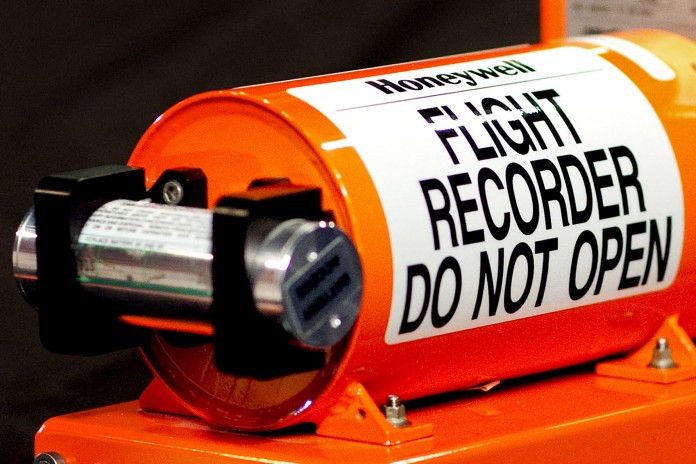
As days pass while crews search the seas for answers to yet another aviation mystery, some accident investigators are saying it’s time to employ technology to make crash data available immediately.
Instead of waiting for sophisticated submarines to find and retrieve aircraft black box recorders, which can take weeks or even years, the technology is rapidly maturing to give investigators almost instant access to critical clues about an accident, either by streaming the information in real time via satellite or by devices designed to jettison from the plane.
“I do think the industry has to look at itself and say, is it time?” said Tony Fazio, a former accident investigation chief for the Federal Aviation Administration who now works as an aviation consultant. “The public is demanding it.”
While there have been few cases in the history of modern aviation that haven’t eventually been solved, the National Transportation Safety Board and others argue that learning what happened as soon as possible could help prevent other accidents or speed criminal investigations in the case of terrorism. It also reduces the chances of lost data if the recorders are damaged.
The crash of EgyptAir Flight 804 in the Mediterranean early Thursday on a flight from Paris to Cairo is renewing a debate that began with the 2014 disappearance of Malaysian Air Flight 370 over how best to track aircraft and ensure that accident investigators get the most timely data.
While calls for speedier access to flight data last year by the NTSB were met with skepticism, there are indications that international regulators and airlines are warming to the idea.
The International Civil Aviation Organization, an arm of the United Nations, on March 2 endorsed the concept that airliners should have equipment that would provide critical flight information immediately without having to access hard-to-find recorders. ICAO didn’t say whether airlines should stream the data over airwaves or use so-called deployable recorders, such as those made by DRS Technologies Inc., a Crystal City, Virginia-based subsidiary of Italy’s Leonardo-Finmeccanica.
However, the ICAO standard would apply to very few aircraft. It wouldn’t take effect until Jan. 1, 2021, and would only apply to newly designed models. Existing models and planes in service wouldn’t need to be retrofitted, under the ICAO standard.
Airlines are looking at the idea and a handful have even begun experimenting with flight data streaming through satellites, said Perry Flint, a spokesman for the International Air Transport Association, which represents carriers around the world.
“We’re looking into the means of compliance with the requirements,” Flint said. “We look forward to learning more about potential tracking and data retrieval solutions from manufacturers.”
The issue is separate from similar calls for better flight tracking that also came up after the Malaysia Air flight went missing. In the case of EgyptAir, wreckage has been found and radar was tracking the plane as it went down, so investigators have a good idea where it rests in the Mediterranean Sea.
Even with that knowledge, Fazio said the lack of information about what happened leaves a void for family members of people on board the plane and for the public. “All we do is speculate and it doesn’t do the public any good,” he said.
Until recently, Fazio said he had opposed new requirements for flight recorders as unnecessary. But recent accidents combined with the rapid pace of improving technology for data storage and transmission had convinced him now it makes sense.
“As a society, we’ve become accustomed to the internet of things,” he said. “I just Google a question and I get an answer. When there are fatalities involved, people want to know the answers quickly. Even more so with a catastrophe like airplane accidents.”
He said he wasn’t endorsing a specific technology and hadn’t studied how much it would cost airlines.
Creating an expensive new requirement for equipment on airliners will be difficult to get approval in the U.S., said Steve Wallace, who also was head of the FAA’s accident investigation bureau.
Under U.S. law, regulators must show that costs of new safety equipment are offset by benefits, which typically mean the prevention of deaths. Flight recorders, which while valuable investigative tools, don’t prevent accidents in the way that new safety devices do, making it harder to make the case, according to Wallace.
However, if it’s possible for airlines to adapt existing technology being used to bring high-speed internet to passengers, they may be able to get access to flight data at little or no additional costs, he said.
“I would support exploring practical streaming of data,” he said. “It might be very simple to have that data, some part of it anyway.”
Crash-proof flight recorders store data on hundreds of aircraft systems, monitoring engine performance, tracking how pilots control the plane and storing details on the flight path. On modern airliners, that data is sent through computer networks and is often downloaded after flights so airlines can monitor pilot performance and track maintenance needs.
The NTSB said one possibility to improve investigations would be for aircraft to send a burst of flight data only during an emergency. That would reduce the costs for data transmissions.
Many planes already automatically transmit small portions of that data, including the EgyptAir plane that crashed. In the minutes before it went down, the plane radioed seven error messages indicating smoke had been detected and electronic systems were experiencing problems. So far that hasn’t narrowed down what happened on the plane.
The 2009 crash of Air France Flight 447 is an example of how even short bursts of data can provide critical clues about the cause of an accident.
The Airbus Group SE A330 disappeared on a flight from Rio de Janeiro to Paris, killing all 228 aboard. Because the plane went down in the middle of the Atlantic Ocean where no radars could track it, it took almost two years to find undersea wreckage and locate its flight recorders.
Just like EgyptAir, the plane radioed several error messages in the minutes before it crashed, including one that showed one of its speed sensors had failed, according to the French accident investigation agency BEA. That and other data from the messages prompted Airbus and aviation regulators to issue warnings to airlines about the sensor within three months of the accident.
Once the black boxes were recovered, the failure of a speed sensor was confirmed as a trigger that caused a pilot to lose control. BEA endorsed some form of data transmission as part of its report on the Air France accident.
Fazio acknowledged there may be difficult issues to overcome with data streaming or other technology, such as privacy concerns and whether airlines or some government agency would collect the data.
“It’s not an easy thing,” he said. “But I don’t think they’re insurmountable.”
(c) 2016, Bloomberg · Alan Levin · NATIONAL, WORLD
{Matzav.com}










